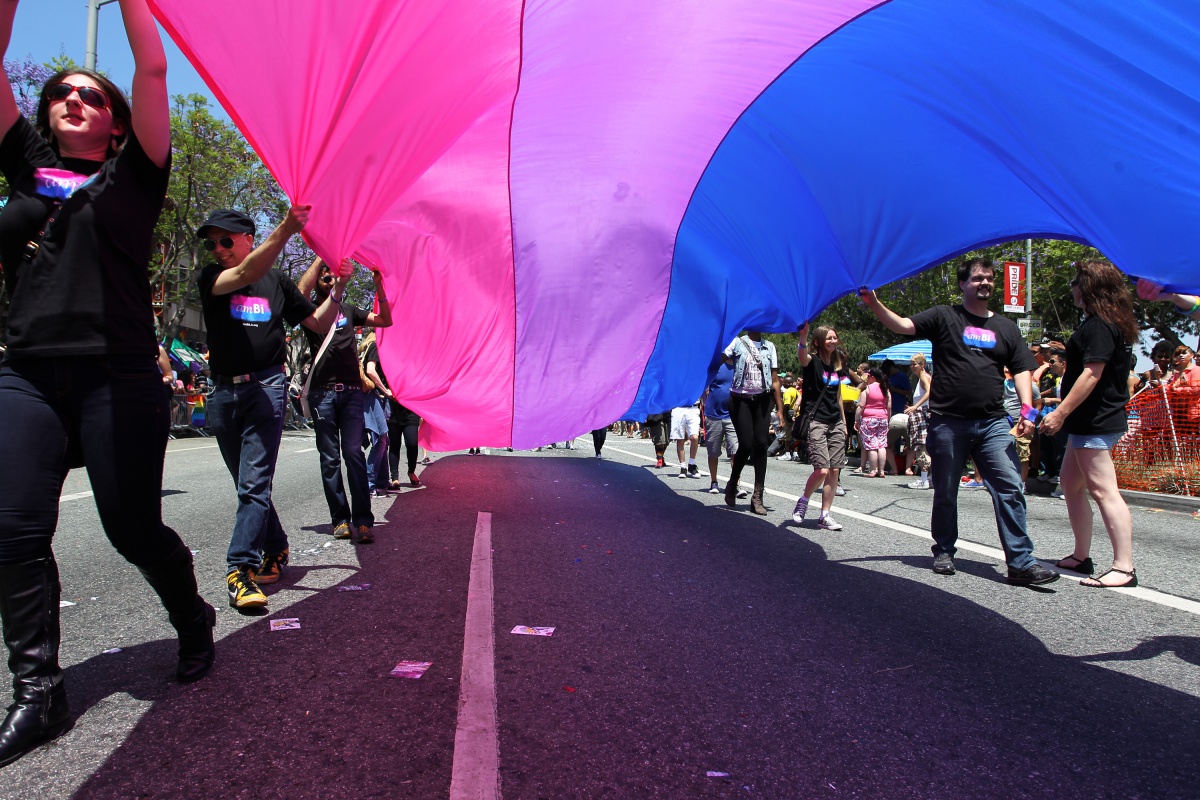Labels Are for You, Not Everyone Else: Why I’m Bisexual and Not Pansexual
Emma Watson made me this way ...

As the spectrum of sexuality grows and changes, there are more labels emerging to fit the various identities that people have found make sense for them—and for them is the key part of this discussion because while labels are helpful for some, they are more a way of helping to figure out your own stuff than an accurate marker of one’s life for others.
In my opinion, the growing and greying of the sexual spectrum is amazing, and it only helps more people feel included as they try to answer the age old question “Why do I feel different?” Unfortunately, as a result of the necessary expansion and grey areas, there is a lot of misinformation, and where I see this a lot is in the difference between who identifies as bisexual vs. who identifies as pansexual—as if it even needs to be an us vs. them.
I can only speak for myself, but for me, bisexuality was the term that linked my heart to my mind. For so long, I’d rationalized my attraction to women away as an aesthetic or as a sign of my being a girl’s girl. It wasn’t until I fell in love with another woman that I allowed myself to understand that there was a reason that the images saved on my computer were 80% women, 15% Sesshoumaru, and 5% Alan Rickman.
Bisexuality was explained to me as the attraction to both my own gender and genders not like myself, without a preference for one over the other. For me, it wasn’t just cis-men and cis-women, but a spectrum of bodies and people beyond any specific gender. It made sense, and it helped me feel confident about who I am. At the time, pansexual was not a term I’d been familiar with.
As the years have progressed with celebrities like Natasha Negovanlis, Janelle Monáe, and others coming out as pansexual, bringing more public acknowledgment to that label, it has been a learning experience for both myself and the general population. The description of pansexuality I see most often is “I don’t see gender, I just like people,” which, when I first heard it, sounded like bisexuality to me, but as far as I was concerned, one didn’t remove the other.
Heck, I call myself bisexual and queer interchangeably most of the time. However, one of the issues that arose was that, in the discourse between what pansexuality and bisexuality were and the differences between the two, I saw some people trying to put bisexuals in a box.
There were those who’d say being bisexual was transphobic because bisexuals were only attracted to cis people, or that bisexual people didn’t date non-binary people, and suddenly we were doing SAT prep on root Latin words, being told that bi=two and pan=all, which must apply literally to the terms we used and meant that bisexuals were more limited in their preference than pansexual people.
This isn’t confusion or misinformation I lay at the feet of pansexuals or bisexuals—we are just trying to live—but its true cause is the general desire to make queerness as, pardon the pun, straightforward as possible. It’s the insistence there must be a hard line in the sand between the two identities, or one must swallow the other in some battle for superiority as the most “open-minded” sexuality, as if your sexuality automatically makes you open-minded.
I have never heard or seen a bisexual person say they weren’t interested in a trans person or a non-binary person because they were bisexual, nor does being pansexual mean you are free from transphobia or having transphobic ideas. They are just labels, helpful labels that individuals use to talk about their personal sexual journeys, but labels nonetheless.
They wear off, they change, they evolve, and sometimes, they stay the same. We don’t need to take stars who once called themselves bisexual and say, “Well now they are really pansexual because this means that.” People, especially queer people, have the right to define themselves as what makes sense for them and their lives.
If I were a baby gay today, trying to find a term that defined me, there’s a good chance I might call myself pansexual. However, being a bisexual is a skin that fits me just right. I’ve never used it to limit myself, but to explain how I was breaking away from pre-established binaries.
I’m happy with the term, and I stand beside my pansexual siblings in solidarity for our right to be as queer as we want without explaining ourselves or providing partner quotas to prove that we’re really gay. We don’t need to do a Venn diagram to figure out which one we would be, because in the middle are the three most important things: we extra, we cute, we queer as fuck.
The spectrum of identity is just that, a spectrum, and the labels we choose have to be for us before they are for anyone else. Not every label fits perfectly, but if, in the end, they keep us warm and give us comfort, then that’s what matters.
For me, I’ve kept my labels real simple: Black, Bisexual and Brooklyn Born ‘n’ Raised.
(image: Photo by David McNew/Getty Images)
Want more stories like this? Become a subscriber and support the site!
—The Mary Sue has a strict comment policy that forbids, but is not limited to, personal insults toward anyone, hate speech, and trolling.—
Have a tip we should know? tips@themarysue.com